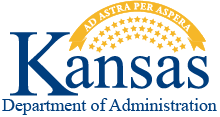Explanation of Section I Costs
These indirect costs represent expenditures incurred for such central services as accounting, payroll, purchasing, personnel, budget, etc. These costs are not billed to agencies because they generally are not easily measured, and/or do not readily lend themselves to billing. Although these indirect costs are not owed to the Office of Accounts and Reports, they should be included in your agency’s departmental indirect cost plan (if one is prepared) so that applicable overhead may be charged to federal grants. To the extent that agencies include the indirect SWCAP costs in their federal programs, corresponding state general fund dollars can be allocated elsewhere. Thus SWCAP maximizes the use of federal dollars "freeing" state general fund resources for other uses.
Since these costs are not directly billed, they are allocated using methodology prescribed by OMB Uniform Guidance under 2 CFR Part 200. The actual allocation function is performed by consultants under contract with the Department of Administration. The coordination of gathering data, information collection/preparation, etc. on the central service costs centers is assigned to staff within the Office of Financial Management. The basis for allocation of the central service cost center expenditures is specific to each cost center. For example, accounting services are allocated based on the number of transactions that an agency processes through the central accounting system. Payroll services are allocated based on the number of paychecks written for the agency. Personnel services are allocated by the FTE, and budget services are allocated based on time sheets maintained by the Division of Budget analysts.
A secondary purpose for the SWCAP relates to identifying statewide indirect costs to fee funded agencies or programs. In addition to state general fund and federal funds used to finance the operations of a particular state agency, an agency may also be fee funded (in whole or in part). This is where the agency charges a fee for the service they provide to their customers. The revenue received from this fee is used to cover the expenditures of the agency or program. For some programs this fee (or rate) charged is set by statute, while others may develop the rate based on historical expenditure information. For those agencies which develop their rates through a rate setting process, the indirect costs identified and allocated through the SWCAP are considered legitimate expenditures of the program which can be included in the rate setting process. Thus these indirect costs can be recovered through the rate charged for these fee funded agencies or programs. This also maximizes the recovery of the costs of providing state agencies with central services.
State agencies administering federal grants are encouraged to prepare departmental indirect cost plans even if indirect costs cannot be directly recovered from a federal grant. In many cases, the indirect costs may be utilized to: (1) offset disallowed direct costs against indirect (overhead) costs to avoid further expenditures of state funds; or (2) provide matching funds for federal grants.


